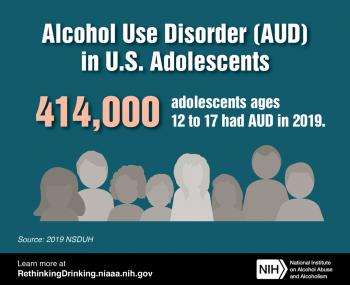Excessive Alcohol Use | Underage Drinking
Underage drinking is anyone under the age of 21 drinking or consuming any amount of an alcohol beverage.
Why It Matters
Underage alcohol consumption is a persistent and serious public health challenge, resulting in deaths each year through motor vehicle crashes, violence, suicide, alcohol poisoning, and other causes. Underage drinking is also implicated in sexual assault and other crimes, impaired brain function, school and social problems, decreased academic performance, and the increased risk of developing an alcohol use disorder later in life. And lastly, it can make changes in brain development that may have life-long effects.
Across the nation and in Wisconsin, underage drinking rates have declined in the last ten years, but Wisconsin remains above the national average.
Alcohol is the most commonly used drug among adolescents. To prevent or reduce underage drinking, it’s critical to take a comprehensive approach (see the four types of law below). It’s also important to recognize that underage alcohol use occurs in the context of excessive alcohol use among adults, which continues to be the third leading cause of death in the U.S. (Stahre et al., 2014).
Ensuring minimum age laws are enforced and performing biannual alcohol age compliance checks are important ways to reduce the availability of alcohol to our youth.
Reducing Underage Drinking in Wisconsin
Communities can modify the drinking environment to decrease underage drinking by using data-driven policies. Twenty-six (26) policies are especially effective at decreasing underage use of alcohol beverages. The Wisconsin Alcohol Policy Project (WisAPP) has analyzed these policies based on their use and availability in Wisconsin.
These drinking prevention policies fall into four categories:
- Laws addressing minors in possession of alcohol beverages;
- Laws targeting underage drinking and driving;
- Laws targeting alcohol suppliers; and
- Laws affecting alcohol pricing.
View policy recommendations for preventing underage drinking (PDF)
Alcohol Use Disorder (AUD) in Adolescents
In the U.S., underage drinking contributes annually to more than 3,500 deaths among people under 21, about 190,000 emergency department visits by people under 21 for injuries and other conditions linked to alcohol, and about $30 billion in economic costs.
Alcohol Use Disorder (AUD) is a serious diagnosis that some of our youth receive but is just the tip of the iceberg when it comes to excessive alcohol use. Pre-pandemic data shows that 414,000 adolescents ages 12 to 17 had AUD in 2019. More than 90% of the alcohol consumed by those under age 21 is consumed by binge drinkers. In Wisconsin alone, 17.8% of youth ages 15 to 17 admitted drinking alcohol in the last month, and 9.8% admitted binge-drinking in the last month.
Resources for the Prevention of Underage Drinking
Underage Drinking (Alcohol Rehab Guide)
Learn the consequences to youth who drink.
Underage Drinking (CDC)
Learn more about how alcohol harms underage drinkers.
Learn about the evidence-based recommendations reported to Congress.


